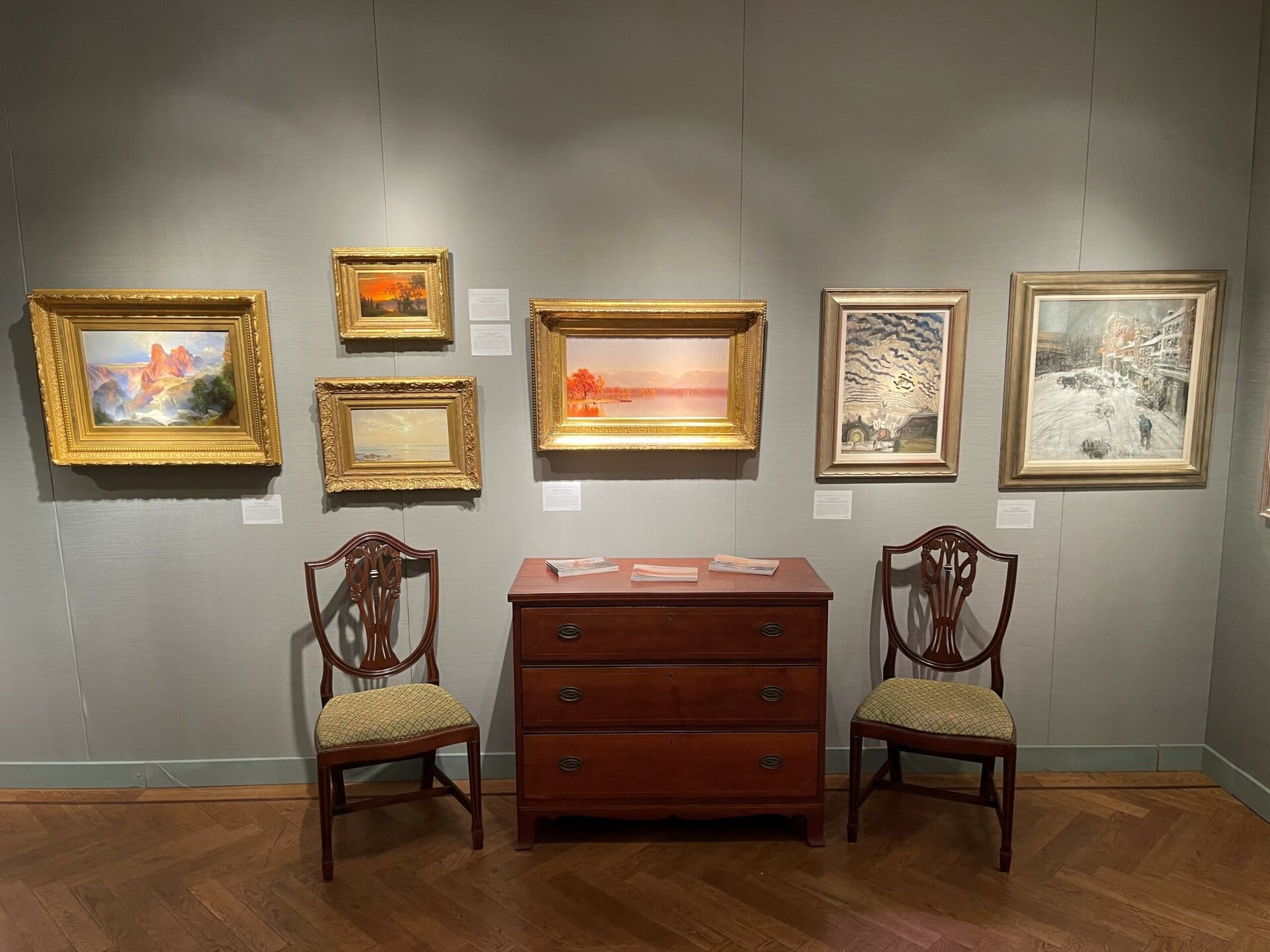Why Lake George? An Essential Site for the Hudson River School
By Katie Siede, Research Associate
Nicknamed the Queen of American Lakes, Lake George became an important site for many Hudson River School painters, including Thomas Cole, John Frederick Kensett, David Johnson, and Richard William Hubbard. The serene topography offered artists numerous vantage points while the green peaks of the Adirondack Mountains created a natural framing for the panoramic views.

The location also held historical importance, as it was the site of several military campaigns during the French and Indian War (1754–1763). As cities became increasingly industrialized throughout the nineteenth century, Lake George provided an accessible window into the country’s natural beauty. While painters worked to transcribe the scenery onto their canvases, travel writers sought to capture the splendor of Lake George in writing, often evoking a nostalgia for the historical events that once occurred there.

Paintings and texts alike contributed to a growing tourism in Lake George and by 1850 the area had become one of the most popular destinations in America. As Thomas Cole wrote, “I would rather persuade you to visit the ‘Holy Lake,’ the beautiful Horicon, than describe its scenery – to behold you rambling on its shored shores, where its southern expanse is spread, begemmed with isles of emerald, and curtained by green receding hills.”[1] Today, these paintings underscore the significance of this location as a lasting piece of American cultural history.
[1] Erin Budis Coe and Gwendolyn Owens, Painting Lake George 1774–1900 (Glens Falls, NY: The Hyde Collection, 2005), 13.



